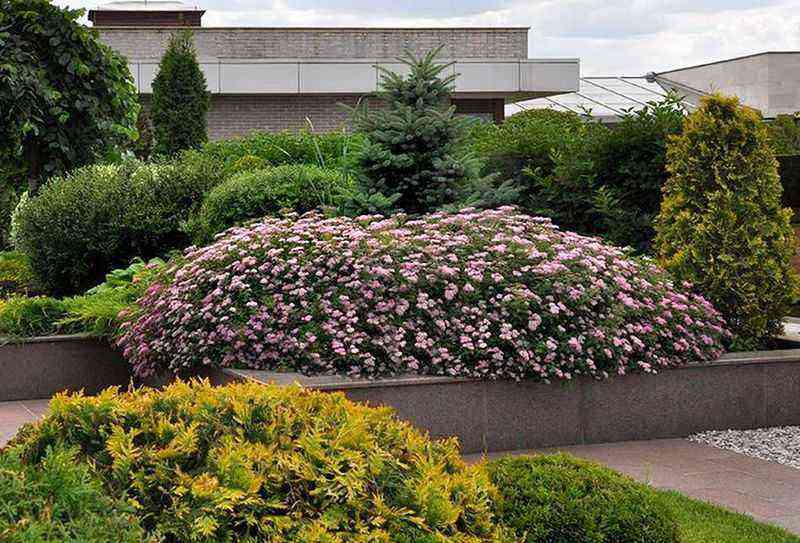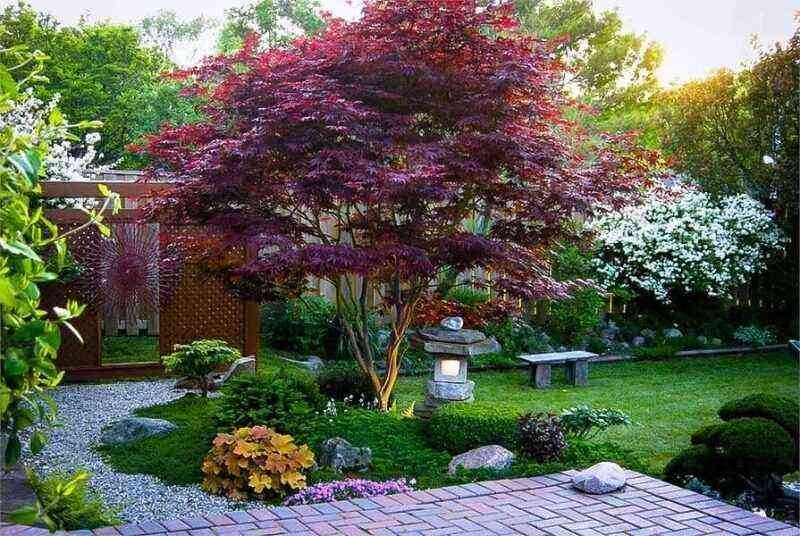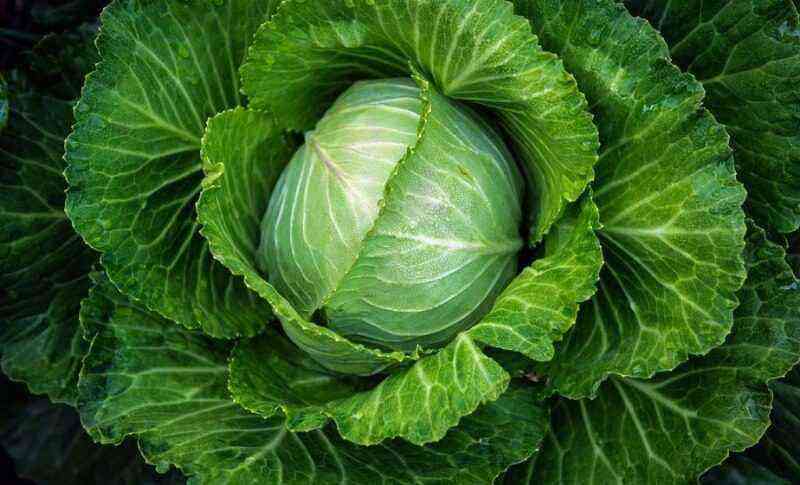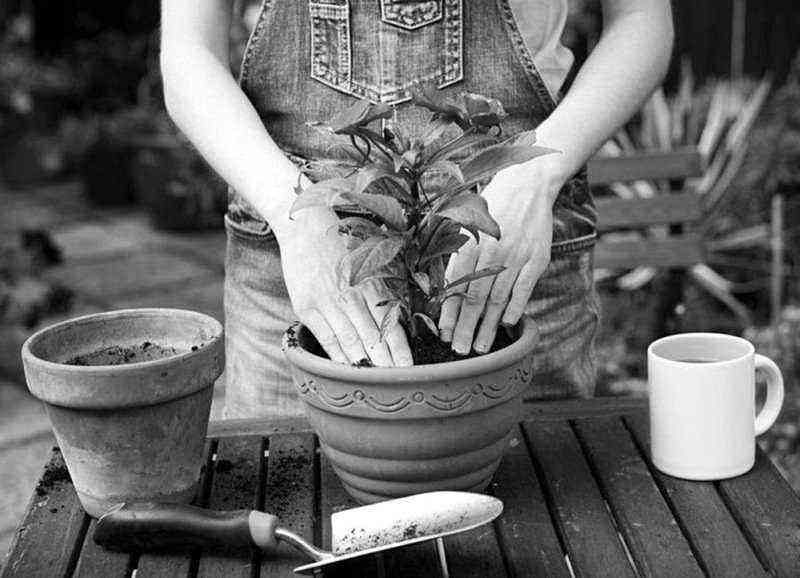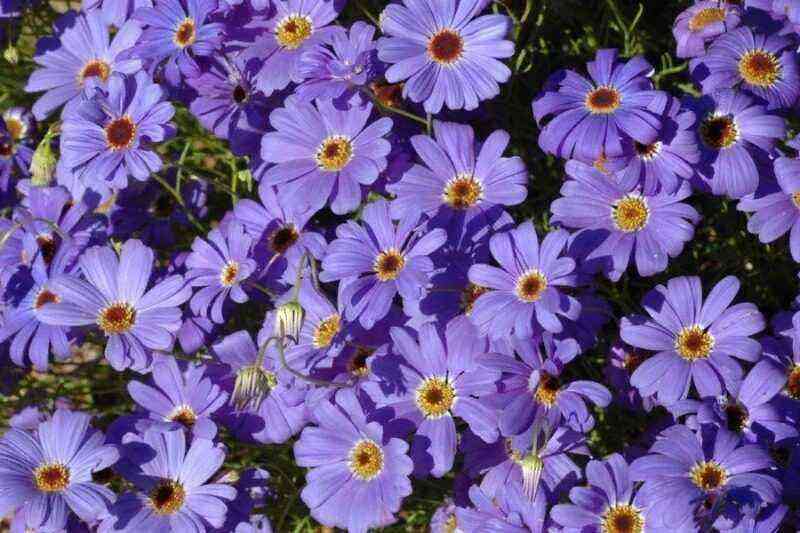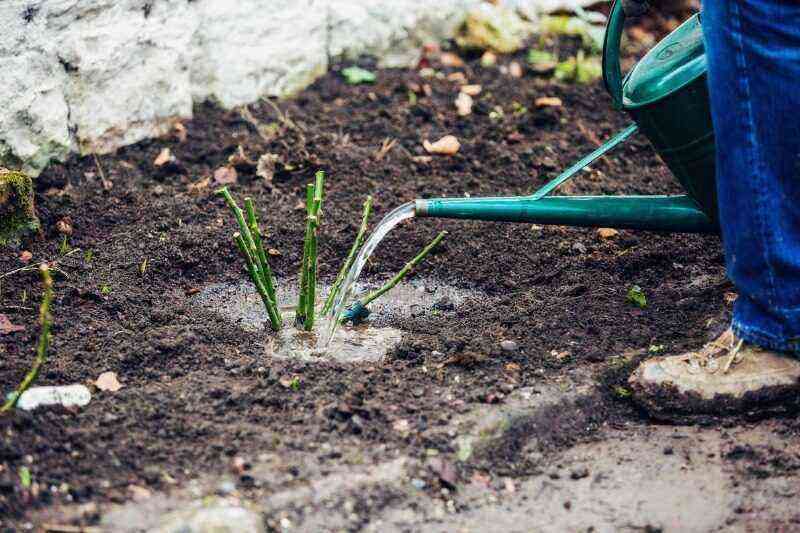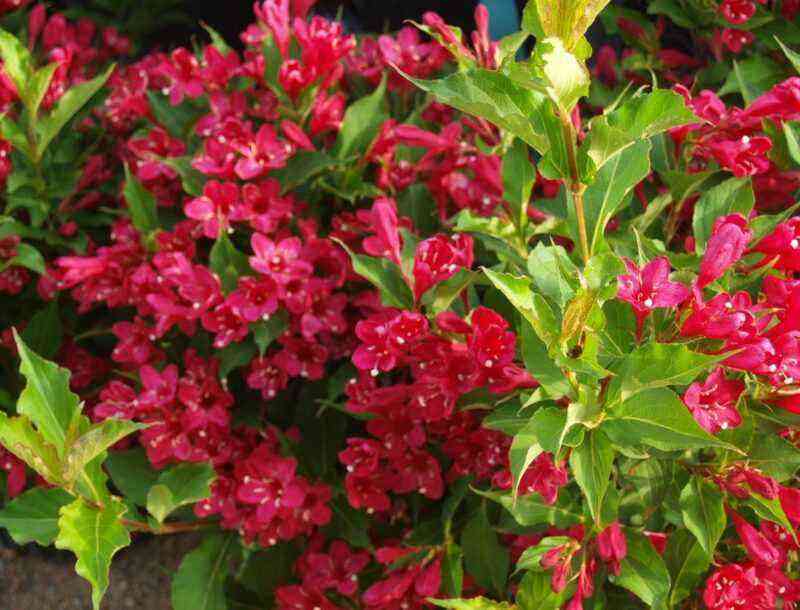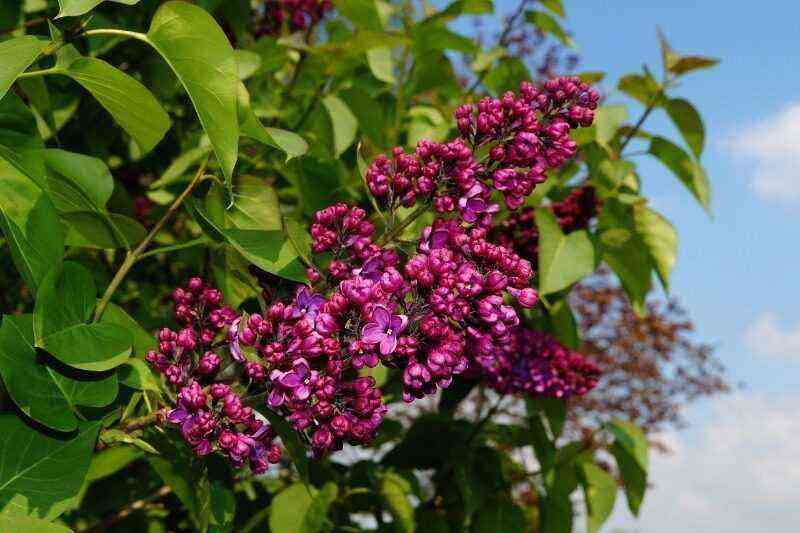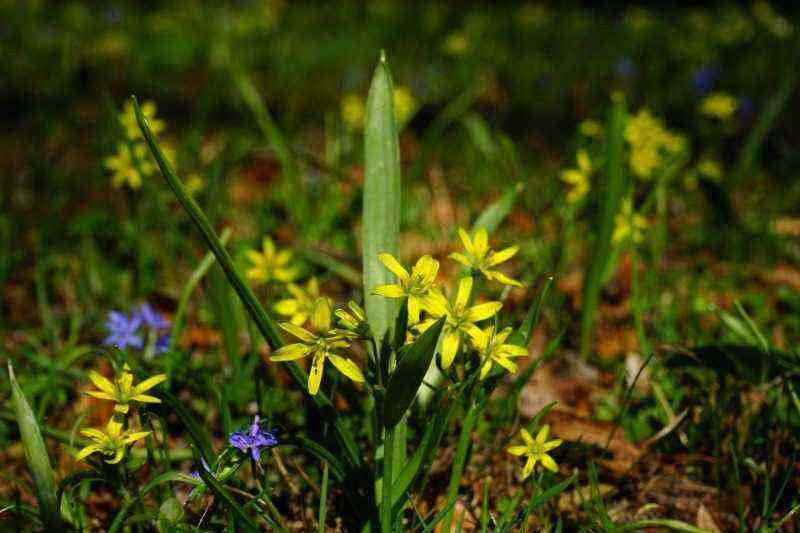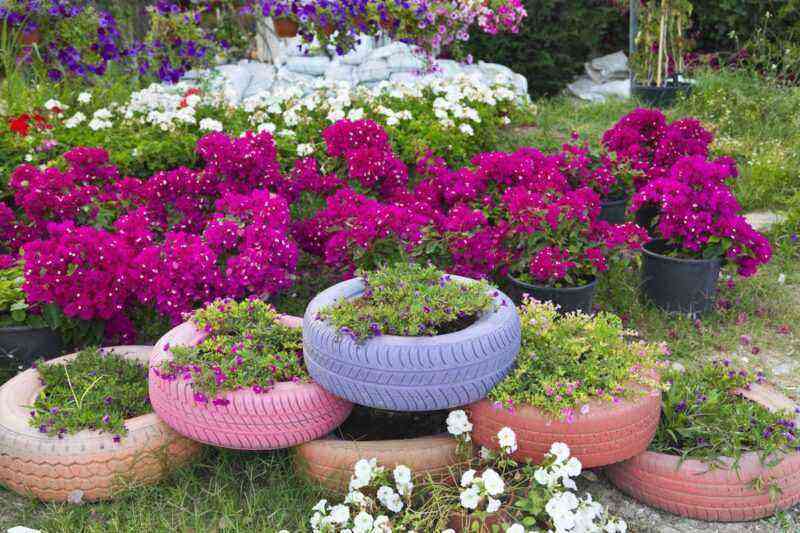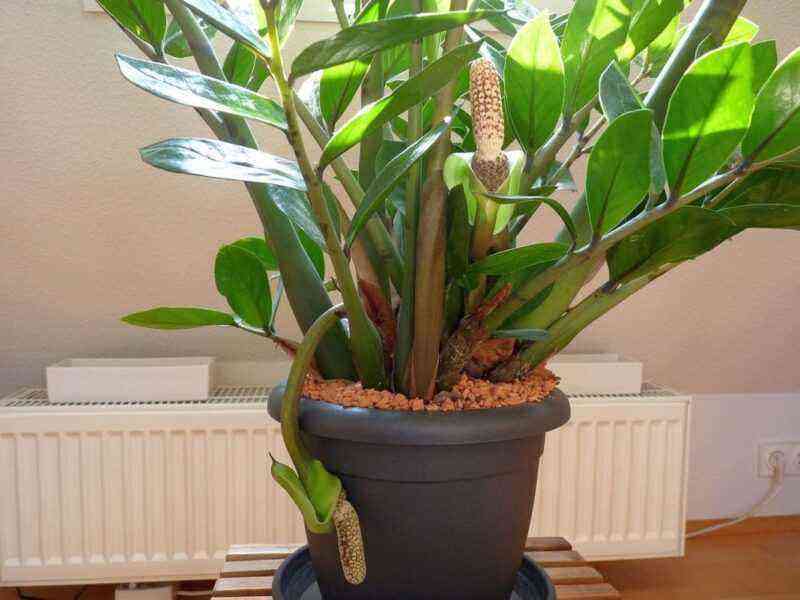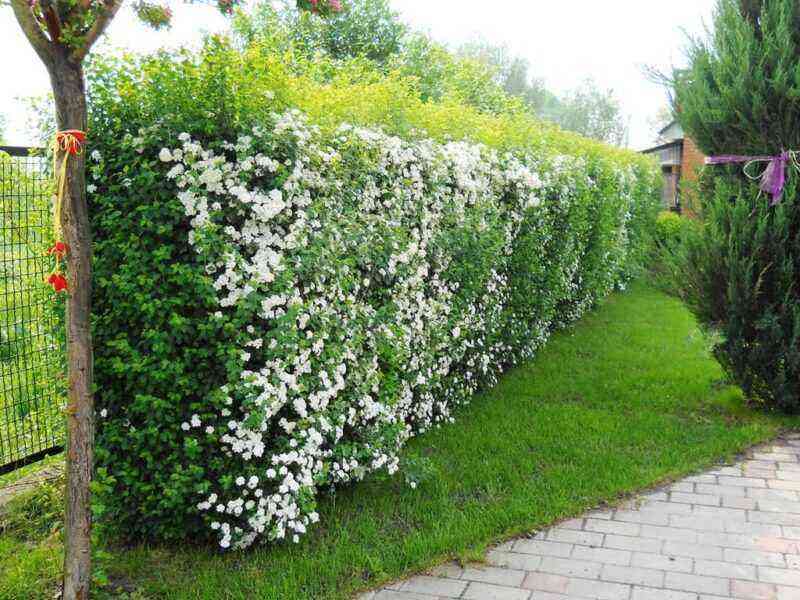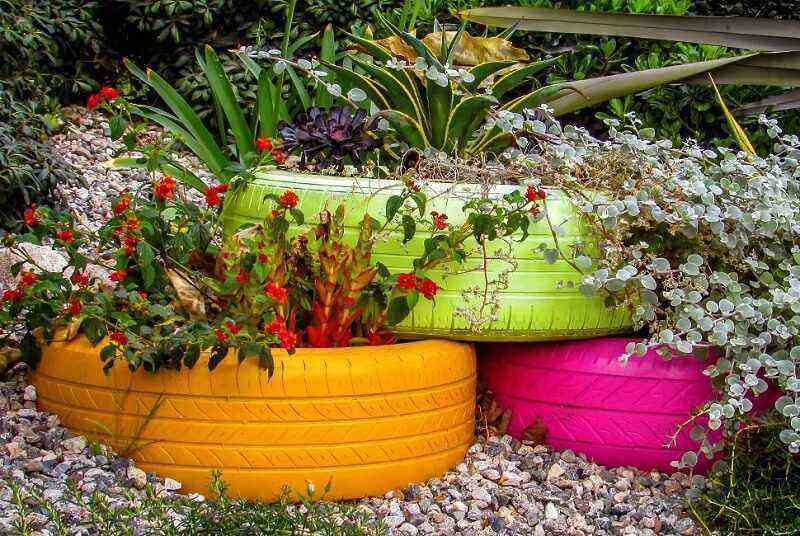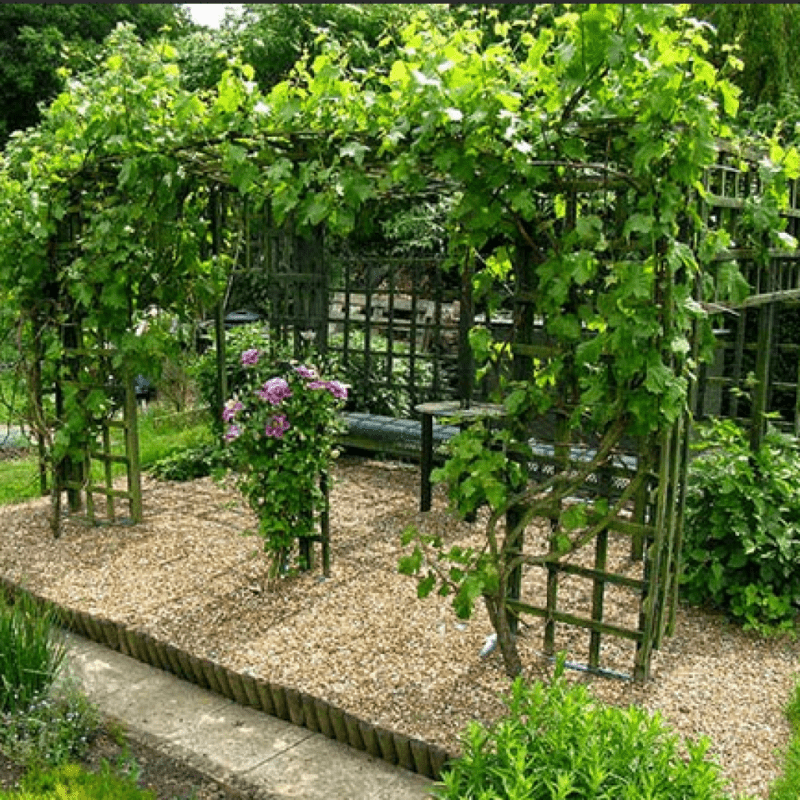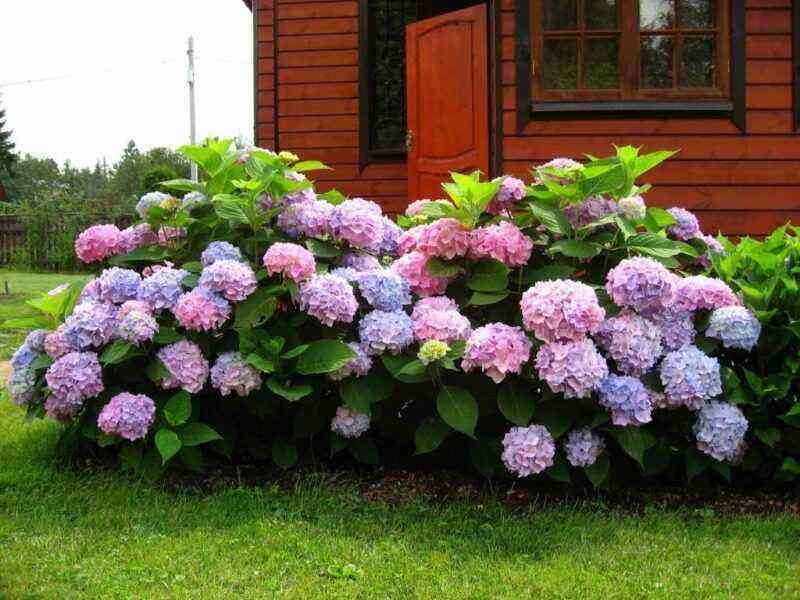Borrowing from the wild rose hips its best properties – unpretentiousness, frost resistance and abundant flowering, ground cover roses are among the most unassuming and easy-to-care varieties of aristocratic garden flowers that do not require regular pruning and feeding. That is why the popularity of landscape roses is growing all over the world, especially in countries with difficult climatic conditions, where gardeners did not always manage to grow the capricious queen of flowers. Now, having planted a ground cover rose on your site, you can be sure that it will not only decorate flower beds, slopes, garden terraces with a bright carpet, but also will not cause much trouble in the care process.
Blooming profusely from spring to frost and easy to grow, ground cover roses are resistant to various diseases and winter cold. In garden landscape design, they are ideal for decorating gentle slopes and creating low vegetation borders along paths. Planted in flowerpots or on raised flower beds, creeping roses look especially impressive due to gently hanging branches, dotted with inflorescence caps, and then – bright autumn fruits. Beds with ground cover roses, towering above the level of the site, not only look aesthetically pleasing almost all year round, make it easy to solve the problem with lean soils and drainage of the rose garden – it is easy to fill the fenced space with a fertile soil mixture and remove excess moisture.

Lush bushes of ground cover roses with multiple inflorescences will add romance and bright color to the garden
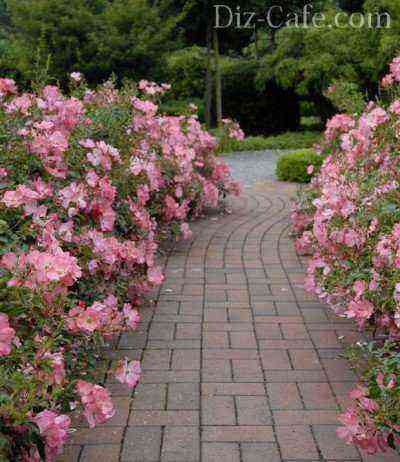
Groundcover roses will create a spectacular frame for paths and paths in the garden

Reflecting in the water mirror, carpet roses will decorate the coastal area of the reservoir with their presence
Some varieties of carpet roses, which have the properties of weaving, will become an ideal decoration for pergolas, gazebos, fences, act as an accent tier in a hedge or diversify a green lawn with blooming islands. Hybrids of boles and landscape roses with an expressive weeping crown shape and whip-like shoots are increasingly used as tapeworms in landscape design. In addition, ground cover roses in landscape design can play not only a decorative role, but also solve some practical problems – planted on a slope with elements of soil erosion, they will strengthen the topsoil and prevent it from being washed out during floods and seasonal precipitation.
You can learn about other ground cover perennial plants for garden decoration from the material:

Scarlet creeping roses will add a bright accent to decorating low borders and retaining walls in a terraced garden

A deep red ground cover rose with simple inflorescences looks great in a flower bed along the edge of the path
The impetus for the cultivation of ground cover roses was Rosa rugosa – a wrinkled or Japanese rose with bright crimson flowers, whose homeland is East Asia, more precisely, northeast China, Japan, Korea, southeast Siberia. Rosa rugosa rubra, or in the people – rose hips, grows wild on the sand dunes of coastal zones and in 1796 became a plant form, which gave rise to a whole class of hybrid creeping roses that can cover vast tracts of land. For the selection of ground cover roses, gardeners also used the Rosa wichurana variety, which in the 19th century was widely used for vertical gardening and the formation of flower carpets in landscape design.
Read more about vertical gardening here:
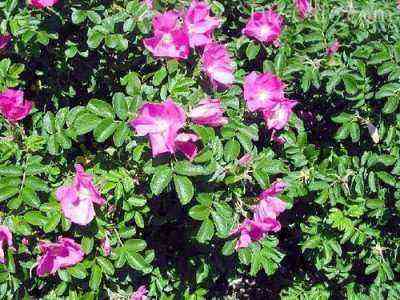
The wrinkled rose Rosa rugosa became the progenitor for ground cover varieties of roses
During the 20-30s of the 20th century, the varieties of roses Max Graf and Fairy were bred, which can already be considered a ground cover, and in the 60s the popular Nozomi and Sea Foam appeared. Further selection of landscape roses continued in the 70s and 80s, when the French company Meilland Star Rose grew a series of successful varieties – Fiona, Swany, La Sevillana, Lovely Fairy, Alba Maidiland, Bionica 82. Some of the best and most beautiful varieties of ground cover roses on today it is Mirato, Diamant, Knirps, Hello, Kent, Red Bells, Ambercover, Limesglut, Limesperle, Limesgold. At the beginning of the 21st century, Meilland introduced the Drift series of carpet varieties, which it developed by crossing miniature and ground cover roses – the result is compact, short, brightly blooming and surprisingly vigorous flowers.
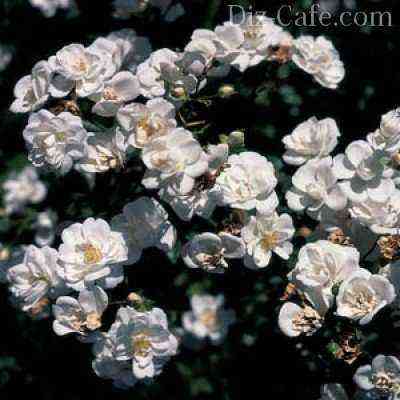
When breeding the first varieties of ground cover roses, the species Rosa wichurana was used
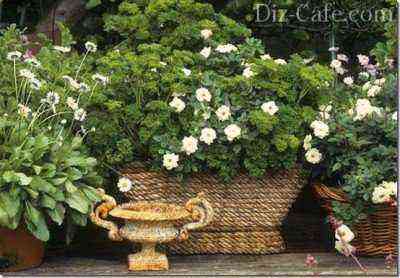
Ground cover roses look aesthetically pleasing not only in the form of a mass planting, but also placed in flowerpots and wicker containers
According to the reviews of Russian gardeners, the most successful varieties of landscape roses for growing in a domestic climate are as follows:
- pink: Palmergarten Frankfurt, Les Quatre Saisons, Fairy, Knirps;
- red: Gartnerfreude, Hello, Red Leonardo, Scarlet Meillandecor;
- white: Aspirin Rose, Blanc Meillandecor, Sea Foam, Swany, Ice Meidiland, Snow Ballet, Alba Meillandecor, Diamant;
- yellow: Nadia Meillandecor;
- orange: Ninette, Apricot Clementine.
When choosing ground cover roses for decorating the landscape, it must be borne in mind that there is still no strict classification of these varieties in gardening – carpet roses in foreign catalogs can be found in scrubs, and in Floribunda roses, and in weaving species. German experts in the cultivation of roses distinguish 5 subgroups of ground cover varieties: low with creeping shoots, low with long creeping shoots, low highly branching, wide upright, wide with creeping shoots.
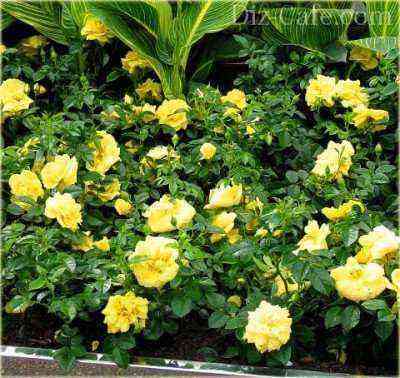
Small double flowers of a yellow ground cover rose will create an unprecedented beauty border that emphasizes the curves of the garden path

Ground cover roses, planted in patio areas and around terraces, will become a real decoration of the local recreation area

In order to accentuate the staircase, it is enough to place at its beginning two overall flowerpots with ground cover roses of expressive orange color
In general, ground cover roses have the following unifying decorative and biological characteristics:
- densely branched bushes with a width exceeding the height;
- rapid growth of shoots;
- long and abundant flowering;
- resistance to frost, pests, diseases;
- no need for strong pruning and careful maintenance.
When choosing partners for ground cover roses, it is necessary to take into account the compatibility of the color range, the flowering period, as well as the shape, texture and color of plant foliage. It is also worth paying attention to the conditions for growing companions for the aristocrat of the garden landscape – they should be light and heat-loving, similar to roses. Beautiful ensembles with carpet roses of any shades and varieties are created by lavender, daylily, geranium. The queen of the garden looks harmoniously with a variety of herbs and cereals – rosemary, fennel, thyme, fescue, sage, garlic, onions. Creeping roses are perfectly combined with primroses, viols, geyhers, hosts. But the most expressive will be the combination of rose bushes with plants-owners of silvery leaves – carnation, wormwood, santolina.
Traditional companions of a rose in a mixborder and in a flower bed:
- for the lower tier – cuff, bell, iris;
- for the middle tier – delphinium, foxglove, dahlias;
- as an accent – clematis, bulbous primroses, lilies.
One of the most romantic couples is between rose and clematis, especially the purple-flowered Clematis viticella and Clematis integrifolia. The combination of roses with herbs will avoid overloading the rose garden and dilute the planting of flowers with neutral green tones. Airy grasses planted in the foreground of the flower garden will give it a romantic mood and form a lush border for a ground cover rose. Planting tall grasses such as miscanthus, millet, willow reed in the background of the rose garden will create a beneficial backdrop for roses and add depth to the floral arrangement.
The material on creating multi-tiered flower beds will also be useful:

Harmonious blowing is formed when planting red ground cover roses together with lavender
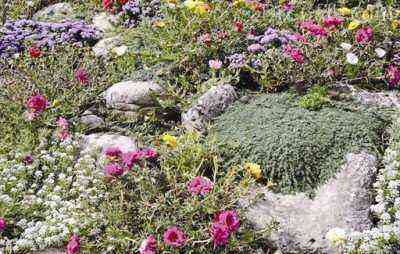
Creeping roses can be successfully included in the composition of an alpine slide
Stage # 1 – choosing a landing site
The development and growth of a ground cover rose, like any other, is largely influenced by the following factors:
- illumination and slope of the landing site;
- temperature regime;
- soil moisture;
- acidity of the soil;
- planting density.
Roses are light-loving plants – intense insolation of the planting site promotes long flowering and abundant bud formation due to the rapid movement of nutrients from the soil to the plant and optimal evaporation of moisture from the foliage surface. It is desirable that the rose planting site has a slope of about 7-11 degrees to the southeast or west, be well lit by the sun in the first half of the day, and in the hot, midday hours, it is in the shade. If, for most of the day, the roses are under the scorching rays of the sun, then their color will fade, the petals will “burn” and they will quickly fade.
To prepare a good rose garden site, consider the soil requirements:

Miniature perennials planted in the foreground of medium-high ground cover roses highlight the beauty of the abundantly flowering shrubs
The proximity of shrubs and trees will help create the shade the roses need and, moreover, protect them from the wind. But at the same time, it is impossible to place the rose gardens at a small distance from the overall garden plants – they will take nutrients and moisture from the roses, forming a zone of long-term shading. In poorly lit areas of the garden – near the walls of buildings and under tree crowns, the root system of a rose slows down its growth, shoots become thin and weak, “blind” branches without flowers often form, and fungal diseases appear.
It’s important to know! The slope of the rose planting zone contributes to optimal insolation of the site, the removal of melt water in spring, as well as effective drainage of the soil during heavy rainfall. In addition, rose gardens, raised by 40-50 centimeters relative to the general level of the garden, will practically not suffer from frost, since cold air naturally accumulates in the lowlands.

A neat small flower bed with carpet roses of different shades is a catchy accent for a green lawn
An essential characteristic of the site for planting roses is the degree of soil moisture and the level of groundwater. Roses are extremely poorly tolerated by moist soils, which impede oxygen circulation, are too supercooled in winter and have high acidity. Filling a gravel cushion into the planting pit will slightly alleviate this problem, but will not completely solve it, therefore, it is better to drain water from a rose garden planted on wet ground using drainage pipes.
You can learn more about how to arrange a water drainage system on a site from the material:

The bark of coniferous trees, used as mulch for the rose garden, will protect the planting from pests, weeds and will help to retain moisture in the soil.
The temperature of the air and soil in the zone of the rose garden is also important – the optimal indicators for the air are 15-22 degrees, for the soil – 17-20 degrees. Both the overheating of the earth and its low temperature are bad – in both cases, the development of the rose is inhibited, the number of flowering shoots is reduced. To prevent excessive heating of the soil between the bushes of ground cover roses, it is mulched with peat, humus, and freshly cut grass.
As for the composition of the soils, the most favorable soil for any roses is loamy, which transports moisture and oxygen well to the rhizome of the plant. Rose seedlings are poorly accepted in dry sandy soils, which overheat in summer, freeze in winter and poorly retain nutrients. You can improve lean sandy soils with compost mixed with peat, clay, turf soil. Stony and heavy clay soil is not entirely successful for a rose garden, into which it is recommended to add sand, peat, compost, rabbit or chicken droppings, and also drain with small grooves.
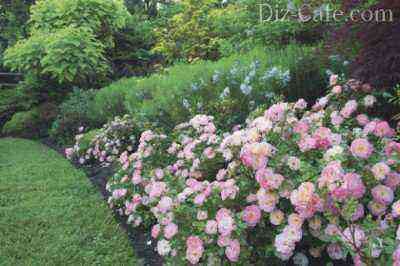
Blooming profusely throughout the season, pastel-colored groundcover roses provide delicate framing for lawns and green lawns.

An interesting solution for garden decor can be a flower bed with ground cover roses, repeating the outline of the path
The acidity of the soil is of fundamental importance for the successful cultivation of any varieties of roses, including ground cover ones, in the open field, since the regal flower is quite capricious – neither the critically acidic reaction of the soil with a pH of less than 7, nor an alkaline one with a pH of more than 7. The best option is soil with weakly acidic reaction in the range from 5.5 to 6.5 pH.
To determine the acidity of the soil, you can use litmus paper, which, when interacting with an aqueous solution of the soil, will change its color to blue if alkalis prevail in the soil or to red if there is an excess of acid. More accurate soil analyzes are done by specialized agricultural institutes. Soils with high acidity are neutralized with limestone crushed into dust, gypsum, bone or dolomite flour, and ash. With an alkaline reaction of the soil, it is acidified with superphosphate, sulfur, peat, coniferous or leaf humus.
You can learn more about how to liming the soil in the garden from the material:

Due to the three tiers formed by creeping and standard roses in combination with lavender, a small rose garden looks like a bright accent in the garden landscape
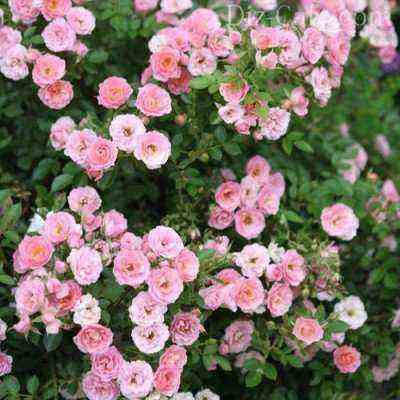
Thanks to its multiple miniature inflorescences, a groundcover rose garden is always a catchy and spectacular corner of the garden.
Before laying out the rose garden, it is also necessary to analyze which crops have previously grown on the selected site. It is unacceptable to plant roses where a rose garden has already existed for 7-10 years or rosaceous plants have grown – hawthorn, irga, pear, apricot, cherry, and others. Although, if desired, depleted soil can be selected to a depth of 50 cm and replaced with a fertile mixture consisting of clay, compost, mineral fertilizers, humus or well-rotted manure.

Groundcover roses can be a harmonious addition to a multi-level hedge, forming the middle or lower tier
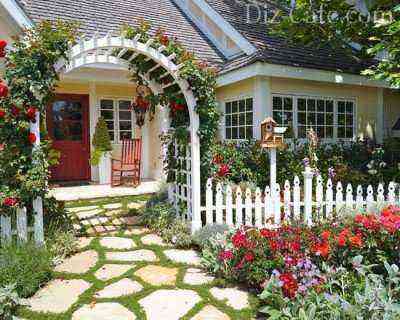
Thanks to their abundant color, ground cover roses form a colorful carpet that can bring a fence or pergola to life.
When placing ground cover roses in compositions with other garden plants – in mixborders, flower beds, it is advisable to provide optimal distances between planting groups in order to conveniently approach flowers for pruning, feeding, watering, without damaging their “neighbors”. The distance between rose bushes in a flower garden ranges from 30 centimeters to a meter and depends on the characteristic features of the variety, the shape and size of the bush, and the intensity of shoot growth.
Stage # 2 – preparing for landing
It is best to prepare holes for planting ground cover roses in advance – at least a few weeks before moving the seedlings into the ground. For autumn planting, it is optimal to form pits in the spring, for spring – in the fall, having previously marked out the site taking into account the shape and growth of the bushes:
- Seedling in a container. Despite the fact that suppliers of planting material advise planting a rose in a net, often its root system is not properly prepared for this procedure – the tips of the root processes are bent or broken. Therefore, the rhizome of the rose must be carefully freed from the packaging, shortened to 30-35 centimeters, and broken or damaged shoots removed. However, most often the integrity of the coma is not violated, and in order to stimulate the growth of the root system, several cuts are made in it to a depth of about 2 cm.
- A seedling with an open rhizome. If a landscape rose seedling was purchased with an open cut root system, then it is recommended to update its slices before planting. With this root system, drying of its processes is often observed, so we advise you to hold the roots of the flower in water for XNUMX hours before moving to open ground.
High-quality and viable rose seedlings should have three well-developed shoots and a fairly branched root system with a significant number of small shoots. Please note that the diameter of the rootstock and the scion is the same – within 6-8 centimeters. Before planting in the garden, the foliage and buds located below the grafting are removed from the shoots of the flower, the broken and unripe branches are cut off, the rhizome is shortened to approximately 20-35 cm in length, and the aerial part – up to 25-35 cm.Before planting ground cover roses in the garden, it is recommended disinfect the seedlings with 5% copper sulfate, and dip their roots in a creamy mixture of clay talker and mullein in a ratio of 2 to 1.
You can grow a rose from a cutting on your own, read about it:
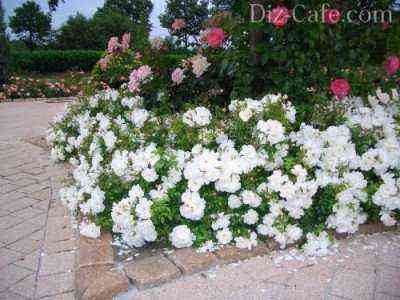
Snow-white foam, woven from the flowers of a ground cover rose, will add an amazing flavor to the decorative flower border
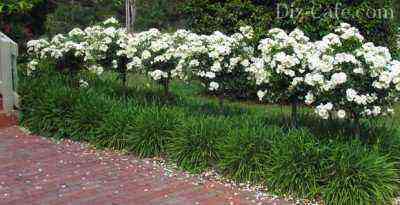
The extraordinary popularity of ground cover roses has led to the creation of hybrids that combine the qualities of carpet and standard roses.
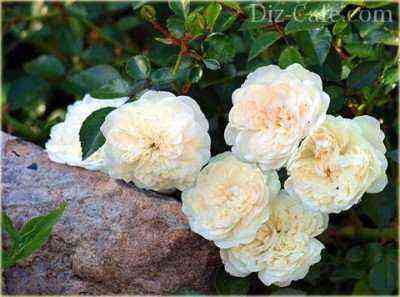
The extraordinary decorativeness of the color of ground cover roses, in combination with their unpretentiousness, have earned these varieties massive popularity among gardeners.
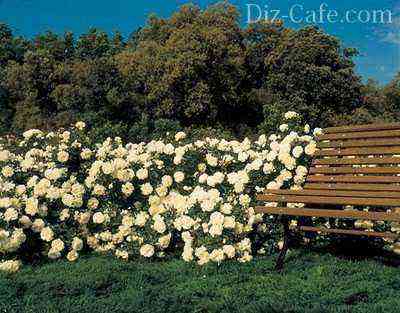
A groundcover rose will create a truly unique corner of the garden, expressive due to the many inflorescences that form a living floral carpet
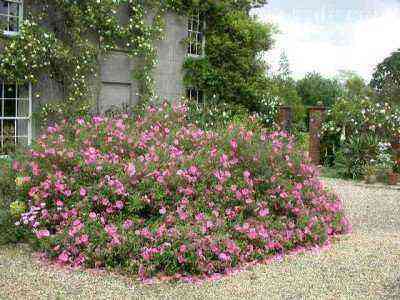
Lush blooming carpet roses are an expressive solution for arranging a flower bed near your home
Stage # 3 – we disassemble the types of seasonal planting
For regions with warm winters, autumn planting of creeping and carpet roses in open ground is more preferable, and for areas with severe and frosty winters, spring planting.
Spring planting of roses (April-May)
Often, unfavorable weather conditions in spring prevent the planting of a seedling immediately after purchase, so you need to take care of its safety – place it in a box or bucket, cover it with moistened sand above the graft and cover it with a film stretched over the frame. You can store seedlings in a cool room or in a burrow. Having chosen the most elevated place on the site, dig a trench about 50 cm deep with one gentle slope, pour the seedlings of roses on the bottom of the sand and place them in the trench, having previously shortened their rhizomes to 30-35 cm.It is necessary to lay roses on the inclined side of the trench, placing spruce branches and by burying the flower in a hole 10 cm below the graft or root collar. After sprinkling the seedling with sand, water and tamp this layer, and then cover it with earth and cover with spruce branches.
When planting roses in the ground in the spring, all the shoots of the rose are cut in such a way that 2-3 buds remain in strong plants, and 1-2 in weak ones. Although the shoots of carpet roses are most often not pruned, but only shortened the root shoots.
Autumn planting of roses (September-October)
Autumn planting of landscape roses is recommended between mid-September and mid-October. A later planting in combination with a cool autumn can lead to the fact that the roses do not have time to set and freeze out in winter. Before moving the rose into open ground, it is necessary to shorten the shoots a little, since the main flower pruning is always done in the spring.
Stage # 4 – landing in open ground
For planting ground cover roses, pits 50-70 cm deep and about 50 cm in diameter are formed in the selected area; it is also permissible for mass planting to dig a trench of the same depth and width as the planting hole. The depth of the pit for planting is formed based on the length of the roots of the seedling plus 10-20 cm.

Pulling out the planting hole and pruning the rhizome of the rose to 20-30 cm, place the bush in the depression and sprinkle with the planting mixture, moisturizing and tamping the ground
If the land on the site is marshy and clayey, then gravel sand is poured onto the bottom of the planting hole, and if light sandy, a layer of clay of about 10 cm is laid.With soil unsuitable for roses, planting holes are dug deeper – up to 70 cm.It is also necessary to loosen the bottom planting hole so that the flower takes root faster. During planting, it is advisable to water the soil layer by layer, which fills the hole – this way you prevent the formation of voids, and after planting you need to tamp the top layer of soil, water abundantly and spud the rose. After the new growth on the bush reaches 5 cm, it is recommended to uncook and mulch the roses.
An interesting solution for a rose garden is a decorative mulch. What it looks like and where else can it be used:

When planting a ground cover rose from a container, the earthen lump is freed from the plastic shell and unchanged is placed in the planting hole
In areas with fertile or loose soil, its upper cut (on the bayonet of a shovel) is taken to knead the soil mixture, which is then used when filling the planting holes. The bottom of the hole for planting a rose is slightly raised with a soil mixture consisting of garden soil and peat (humus), taken in equal parts.
It’s important to know! The recipe for a soil mixture for filling planting pits when planting ground cover roses: garden soil – 2 buckets, turfy soil – 1 bucket, sand – 1 bucket, weathered clay – 1 bucket, humus – 1 bucket, peat – 1 bucket, ash – 2 glasses, bone meal – 2 cups, superphosphate – 1 cup.
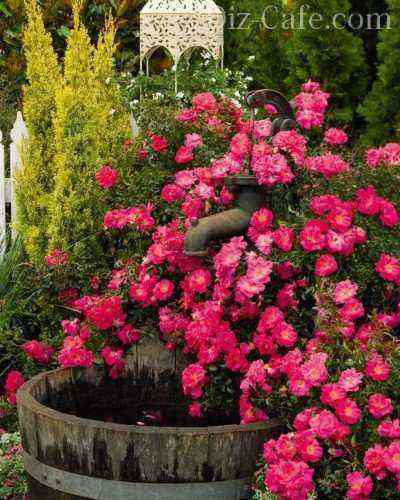
Covering a rusty column and a cracked tub with its lush inflorescences, a ground cover rose set a romantic tone to a slightly abandoned corner of the garden
Stages of dry planting of roses:
- The soil mixture is poured with a slide on the bottom of the planting hole.
- The seedling is lowered into the hole and the roots are straightened so that they do not bend up, and the budding site is approximately 3-5 cm below the ground level.
- The rhizome is gradually covered with a prepared soil mixture, compacting the earth with your hands, and at the end – the top layer is tamped tightly with your feet.
- The seedling is watered abundantly and the location of the graft is checked – in case of subsidence of the earth, it is poured, having previously raised the bush.
- The rose is spud to a height of about 20 cm and covered with a box or spruce branches for a period of about 10 days to form a shadow zone, which will facilitate the adaptation of the plant and the development of new shoots.
Stages of wet planting of roses:
- One or more buckets of water enriched with sodium humate are poured into the planting pit.
- Holding the seedling, the hole is filled with the planting mixture, sometimes shaking the bush for optimal distribution of the soil between the shoots of the root system. In this case, the grafting site is deepened 3-5 cm relative to the ground level at the site.
- The bush is spud and covered with wooden shields or spruce branches.
- After the buds of the rose give rise to a growth of about 5 cm, the structure creating the shade is disassembled, the plant is unpacked, watered and covered with a layer of peat mulch about 5-7 cm thick.
It’s important to know! Mulch protects the plant from overheating, drying out and hypothermia, prevents weeds from entering the territory adjacent to the rose, promotes rapid rooting and further development of the flower. As a rule, roses are mulched with peat, compost, humus.
Stage # 5 – leaving the first summer after planting
In the case when the soil was not sufficiently enriched before moving the seedlings into open ground, during the first summer after planting, the roses are fertilized with slurry, a mixture of mineral additives and chicken manure. At the end of August, the flowers begin to prepare for winter, feeding them with a phosphorus-potassium mixture (20 g of potassium sulfate and 25 g of superphosphate per 1 square meter of the plot). Watering the rose garden from mid-July is minimized so that the shoots on the bush have time to form and get stronger before freezing. Particular attention in the first year after planting requires the process of leaving and forming bushes of ground cover roses, for which all shoots that have emerged from the root collar or grafting are cut into a ring to activate their growth and branching, and the lateral, actively developing shoots are pinched, the faded buds are removed …
Stage # 6 – watering, feeding and pruning
Although it is believed that planting and caring for a ground cover rose does not require much effort, nevertheless, the minimum measures to maintain the decorative effect of the flower must be carried out – to do sanitary pruning of the bush, and also feed it with a combination of mineral and organic fertilizers.

Trimming ground cover roses suggests medium and weak options, when all the excess from 7-10 buds on the branch is removed, if you count from the base of the bush
The main pruning of roses is done annually – in the spring, and is aimed at rejuvenating the bush. After assessing the condition of the flower, it is necessary to remove the broken, frost-damaged, dry branches, cutting them to fresh wood. You also need to get rid of shoots directed to the center of the bush, old – 3 and 4-year-old unproductive branches, and shorten the rest of the shoots to 7-10 buds, counting from the base of the shoot. For ground cover roses, medium and low pruning is applied, and every 5 years, a strong pruning is performed to renew the bush. Some experts believe that carpet roses should not be pruned in order not to disturb their natural shape – especially for creeping roses with long shoots that throw color on last year’s wood.
Watering roses is done at least once a week in the morning directly under the bush with slightly warm water. The volume of water required varies from the size of a rose and reaches 10-15 liters. Young roses are watered more often and more for better rooting. Lack of moisture is better for roses. than its excess, but can affect the abundance of flowering and the size of the inflorescences.

The exuberant color of the ground cover rose will not only decorate the recreation area on the backyard, but also fill the air with a delicate fragrance
In addition to weeding, watering and pruning the bushes, it is necessary to periodically fertilize the rose garden. The traditional scheme for feeding landscape roses:
- April… Nitrogen fertilizers after pruning – ammonium nitrate, urea (1 tablespoon per 10 liters of water). A week later – organic fertilizers (rotted manure in the calculation of half a bucket for each bush)
- May… If the fertilizing necessary for ground cover roses was not done in April, then fertilization can be applied in early May. A good alternative to urea and ammonium nitrate is granular mineral fertilizers, which are poured under the bush in a dry form and require subsequent loosening and watering of the soil. After fertilizing the soil with mineral fertilizers, organic additives are introduced – an infusion of chicken manure or mullein.
- June… In early June, during the budding of a rose, the soil is enriched alternately with calcium nitrate, organic fertilizers and foliar dressing with double superphosphate, ash infusion and mullein solution. In mid-June, before flowering, roses are fertilized with potassium and magnesium sulfates or sodium humate at the rate of 2 liters of solution for each bush.
- July… After flowering, roses are fed with substances with a large amount of phosphorus and potassium, as well as organic fertilizers and foliar dressings in the form of an ash solution, a mixture of trace elements, potassium nitrate, superphosphate.
- August… At the beginning of the month, organic fertilizers are applied for the last time, after a couple of weeks – potassium-phosphorus bait, a week later – potassium sulfate, as well as foliar additives – ash solution, double superphosphate, micronutrient fertilizers.
- September… Top dressing with potassium magnesia, cessation of watering, preparation for wintering.
Due to their frost resistance, landscape roses do not require a thorough winter shelter, like other varieties of roses – they can painlessly survive frosts under a cover of snow, without any additional insulation.
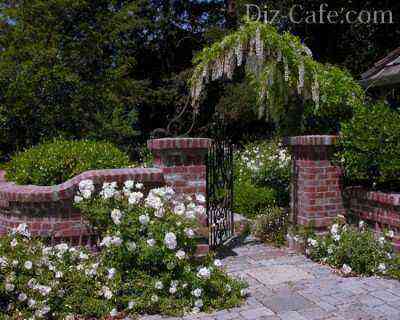
Bulky bushes of ground cover roses with white color harmoniously coexist with a reddish brick fence, which creates an excellent background for a rose garden
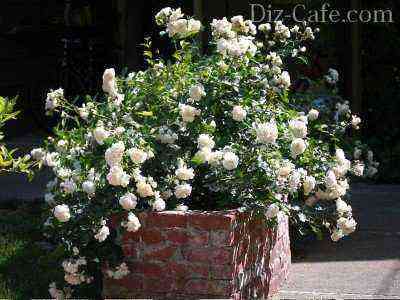
Cascading branches of a groundcover white rose are able to ennoble any container, even folded from ordinary red brick
More tips for creating any type of rose garden:
Choosing ground cover roses as a regal decoration for your garden plot, you can never go wrong – having an expressive decorative look, creeping and carpet varieties do not require significant labor costs in care and, regardless of anything, will always delight you with intense flowering.


